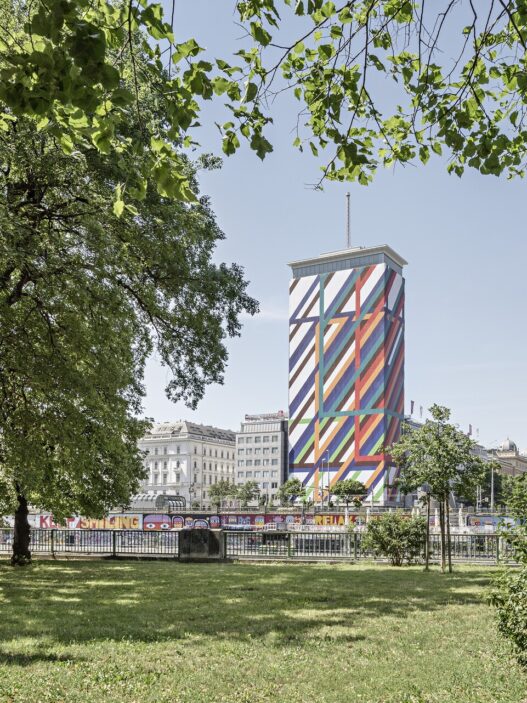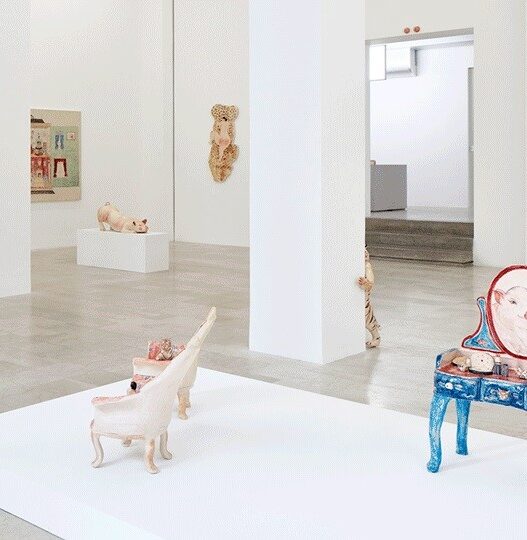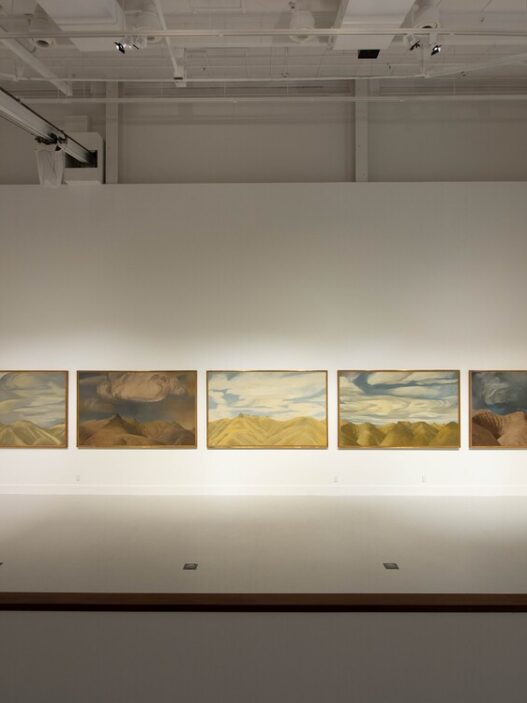July 2–August 28, 2022
Opening times:
Wednesday–Sunday 12–6pm
The Peruvian artist Andrea Canepa (Lima, 1980) has chosen the Aula space of the Appel as the venue for her first solo exhibition in the Netherlands. She will continue her inquiry into the organization of the physical and social systems of our daily life there. An inquiry that aims to show that, despite these organizational systems’ seeming perfectly defined spatial and architectural boundaries, their actual purpose is unclear. a fuzziness based on the idea that practically all areas of human interaction have uncertain limits. Canepa highlights this uncertainty through the 1:1 scale of her sculptures and the performative element of An Interior Motion. By juxtaposing the architectural narratives of the monumental interior with human movement, the possible social realities of its past and present open up opportunities to reinterpret the space and its many meanings. The massive interior’s architectural narratives are contrasted with human activity, providing possibilities to reconsider the space and its varied meanings in light of potential historical and current social realities.
Physical and social structures intermittently entwinted
The ultramodern school building where de Appel currently dwells was both a trademark in its concept to the nearly fifty other schools he created during the post-war period in The Netherlands, as well as being one of the most distinctive. It was first planned as CSG Pascal in 1969. His distinctive style is evident in its concrete facades, pillared interiors, flat roofs, and big windows (with rod paneling). The aula of the school, which served as this display space’s initial purpose, is one of the few structures he put up on concrete columns, giving its design a unique architectural and historical merit. His plan was a typical example of modernist thinking, where social and physical structures were occasionally interwoven and assessed. The recurrence of architectural features inside it was planned to serve as both indications of its program and of where the “user” is located at any given time within the scenography.
Since then, a lot has changed regarding the social, economic, and cultural context of this building, as well as its own purpose. It once served as a shelter for those seeking asylum in The Netherlands before evolving into what it is today: a cultural center located in a hotly contested neighborhood of Amsterdam that is experiencing gentrification that is accelerating. Despite deterioration, the building’s facade has largely held up. However, its inside displays the significant program alterations. The architectural limitations of its design as well as the programs created to fit within leave behind traces of each stage of its history, which are equally exposed.
Although these programs could be seen as instructions, Canepa likes to see them as types of play that are clearly visible, much like how Dutch sociologist Johan Huizinga saw play: as the barometer of all social and cultural interaction in society. In the instance of An Interior Motion, the structure, the distinctive interior of the Aula, and its decorative components serve as both the game’s infrastructure and its playing pieces.
The game is choreography, and choreography becomes a game
The work’s performative component is the game. The version of this created by Canepa features a score that she choreographed with three dancers. Each object in the Aula-space of de Appel serves as a component of a score that provides instructions on how to interpret the objects while navigating the space and gradually activating and altering the performance. Throughout the show, the audience is encouraged to follow suit.
Play, as a performative activity and spatial reality, offers fresh insights on theatrical and social experiences, as demonstrated by Canepa’s work. Play transforms into a fictional framework that generates social, archival, and cultural interpretations. Other attachments to territory occur as a result of the game becoming choreography, and in that transitional area, new possibilities and narratives may appear.
About the artist
Andrea Canepa started her studies in Fine Arts at the Pontificia Universidad Católica del Perú and completed them at the Universidad Politécnica de Valencia, where she graduated with a Master’s degree in Visual Arts and Multimedia. She has received grants from the German Art Fund Foundation, the Senate for Culture and Europe in Berlin, Endesa Foundation (Spain) and awards including the ARCO Community of Madrid Prize for Young Artists and the Generaciones Prize (Spain). She has participated in a number of recidencies including Gasworks (UK) and Jan Van Eyck Academie (Netherlands). She’s had solo shows at the Peruvian-American Cultural Institute (ICPNA) in Lima, Domus Artium Museum in Salamanca, the Museum of Teruel and Sant Andreu Contemporani in Barcelona. She currently lives and works in Berlin.
Schipluidenlaan 12
1062 HE Amsterdam
the Netherlands



















